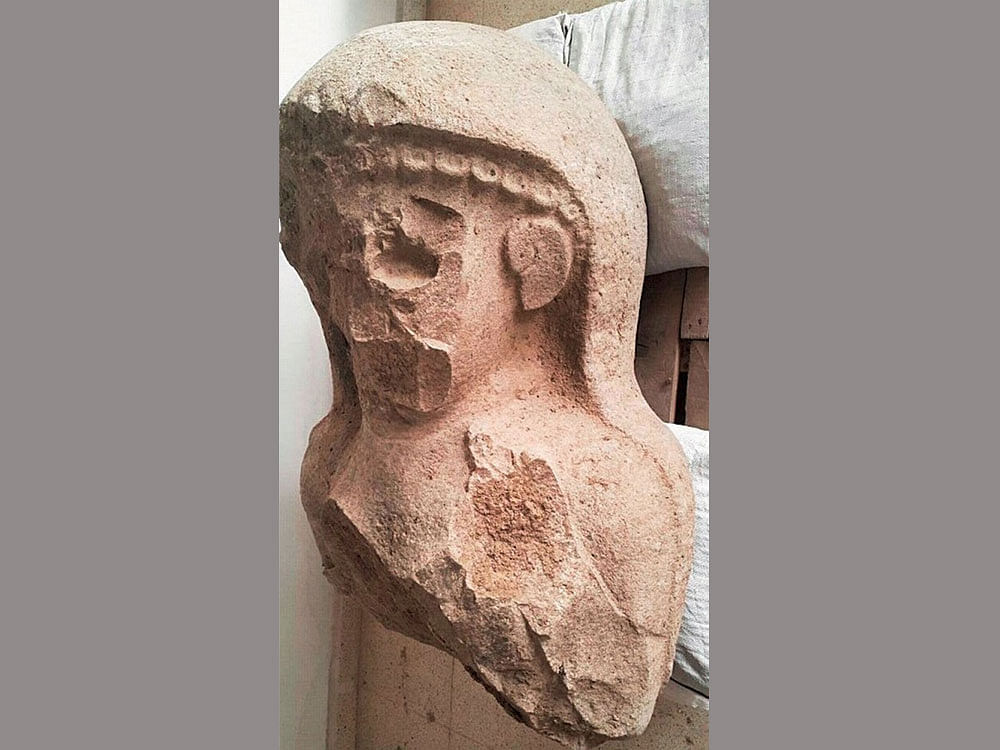
Archaeologists have uncovered a 3,000-year-old female statue at a citadel gate in Turkey, a finding that may challenge our understanding of the public role of women in the ancient world.
Excavations led by University of Toronto in Canada in southeast Turkey near the Syrian border unearthed a beautifully carved head and upper torso of a female figure.
The remnants are largely intact, although the face and chest appear to have been intentionally - possibly ritually - defaced in antiquity, researchers said.
The preserved remnants are made of basalt and measure 1.1 metres long and 0.7 metres wide, suggesting the full figure of the statue would have been four to five metres high. The lower body is missing.
The statue was found within a monumental gate complex that would have provided access to the upper citadel of Kunulua - later Tayinat - the capital of the Iron Age Neo- Hittite Kingdom of Patina (1000-738 BC).
The site is about 75 kilometres west of the Syrian city of Aleppo.
"Her striking features include a ring of curls that protrude from beneath a shawl that covers her head, shoulders and back," said Timothy Harrison, professor at the University of Toronto.
"The statue was found face down in a thick bed of basalt stone chips that included shard-like fragments of her eyes, nose and face, but also fragments of sculptures previously found elsewhere within the gate area," said Harrison.
"The recovery of these tiny fragments will make it possible to restore much if not all of the face and upper body of the original figure," he said.
The identity of the female figure has not yet been determined, researchers said.
"It is possible that she is a representation of Kubaba, divine mother of the gods of ancient Anatolia," said Harrison.
"However, there are stylistic and iconographic hints that the statue represents a human figure, possibly the wife of King Suppiluliuma, or even more intriguingly, a woman named Kupapiyas, who was the wife - or possibly mother - of Taita, the dynastic founder of ancient Tayinat," he said.
"The discovery of this statue raises the possibility that women played a more prominent role in the political and religious lives of these early Iron Age communities than the existing historical record might suggest," Harrison said.
The statue also provides valuable insight into the innovative character and cultural sophistication of the indigenous Iron Age cultures that emerged in the eastern Mediterranean following the collapse of the great civilised powers of the Bronze Age at the end of second millennium BC.